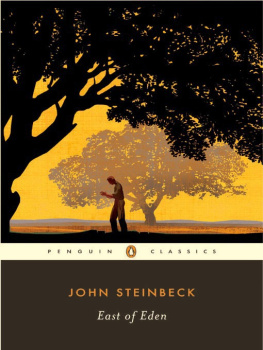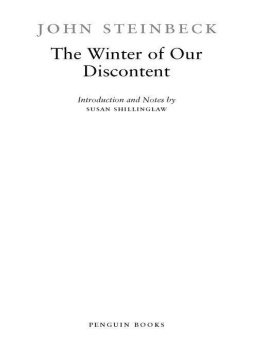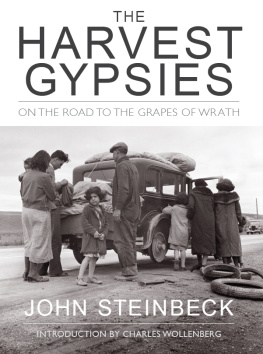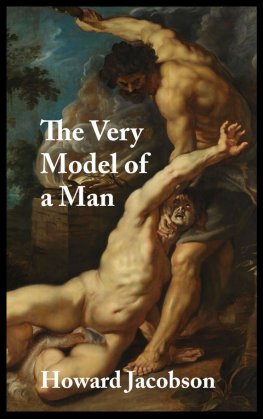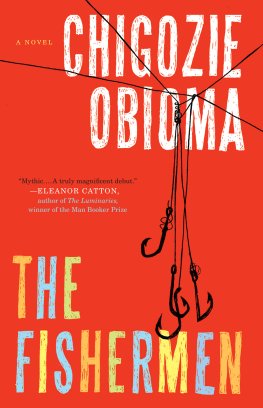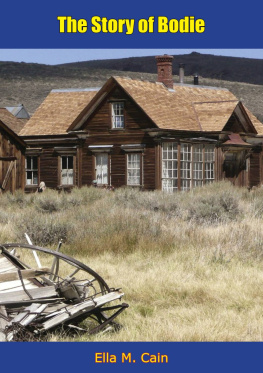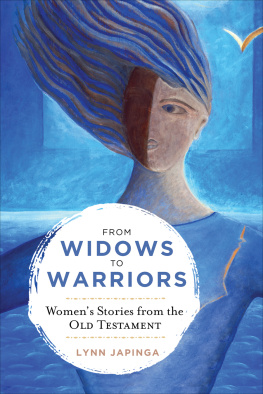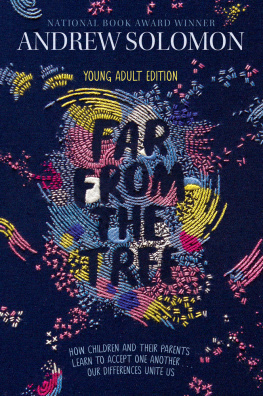Table of Contents
EAST
OF EDEN
JOHN STEINBECK
PENGUIN BOOKS
Penguin Books Ltd, Harmondsworth,
Middlesex, England
Penguin Books, 625 Madison Avenue,
New York, New York 10022, U.S.A.
Penguin Books Australia Ltd, Ringwood,
Victoria, Australia
Penguin Books Canada Limited, 2801 John Street,
Markham, Ontario, Canada L3R 1B4
Penguin Books (N.Z.) Ltd, 182-190 Wairau Road,
Auckland 10, New Zealand
First published in the United States of America by
The Viking Press 1952
First published in Canada by The Macmillan Company of
Canada Limited 1952
Viking Compass Edition published 1970
Reprinted 1974
Published in Penguin Books 1979
Copyright 1952 by John Steinbeck
All rights reserved
LIBRARY OF CONGRESS CATALOGING IN PUBLICATION DATA
Steinbeck, John, 1902-1968.
East of Eden.
I. Title.
[PZ3.S8195Eas 1979] [PS3537.T3234] 813.52 79-14915
ISBN 0 14 00.4997 5
Printed in the United States of America by
Offset Paperback Mfrs., Inc., Dallas, Pennsylvania
Set in Times Roman
Except in the United States of America,
this book is sold subject to the condition
that it shall not, by way of trade or otherwise,
be lent, re-sold, hired out, or otherwise circulated
without the publishers prior consent in any form of
binding or cover other than that in which it is
published and without a similar condition
including this condition being imposed
on the subsequent purchaser
PASCAL COVICI
Dear Pat,
You came upon me carving some kind of little figure out of wood and you said, Why dont you make something for me?
I asked you what you wanted, and you said, A box.
What for?
To put things in.
What things?
Whatever you have, you said.
Well, heres your box. Nearly everything I have is in it, and it is not full. Pain and excitement are in it, and feeling good or bad and evil thoughts and good thoughtsthe pleasure of design and some despair and the indescribable joy of creation.
And on top of these are all the gratitude and love I have for you.
And still the box is not full.
JOHN
Chapter 1
1
The Salinas Valley is in Northern California. It is a long narrow swale between two ranges of mountains, and the Salinas River winds and twists up the center until it falls at last into Monterey Bay.
I remember my childhood names for grasses and secret flowers. I remember where a toad may live and what time the birds awaken in the summerand what trees and seasons smelled likehow people looked and walked and smelled even. The memory of odors is very rich.
I remember that the Gabilan Mountains to the east of the valley were light gay mountains full of sun and loveliness and a kind of invitation, so that you wanted to climb into their warm foothills almost as you want to climb into the lap of a beloved mother. They were beckoning mountains with a brown grass love. The Santa Lucias stood up against the sky to the west and kept the valley from the open sea, and they were dark and broodingunfriendly and dangerous. I always found in myself a dread of west and a love of east. Where I ever got such an idea I cannot say, unless it could be that the morning came over the peaks of the Gabilans and the night drifted back from the ridges of the Santa Lucias. It may be that the birth and death of the day had some part in my feeling about the two ranges of mountains.
From both sides of the valley little streams slipped out of the hill canyons and fell into the bed of the Salinas River. In the winter of wet years the streams ran full-freshet, and they swelled the river until sometimes it raged and boiled, bank full, and then it was a destroyer. The river tore the edges of the farm lands and washed whole acres down; it toppled barns and houses into itself, to go floating and bobbing away. It trapped cows and pigs and sheep and drowned them in its muddy brown water and carried them to the sea. Then when the late spring came, the river drew in from its edges and the sand banks appeared. And in the summer the river didnt run at all above ground. Some pools would be left in the deep swirl places under a high bank. The tules and grasses grew back, and willows straightened up with the flood debris in their upper branches. The Salinas was only a part-time river. The summer sun drove it underground. It was not a fine river at all, but it was the only one we had and so we boasted about ithow dangerous it was in a wet winter and how dry it was in a dry summer. You can boast about anything if its all you have. Maybe the less you have, the more you are required to boast.
The floor of the Salinas Valley, between the ranges and below the foothills, is level because this valley used to be the bottom of a hundred-mile inlet from the sea. The river mouth at Moss Landing was centuries ago the entrance to this long inland water. Once, fifty miles down the valley, my father bored a well. The drill came up first with topsoil and then with gravel and then with white sea sand full of shells and even pieces of whalebone. There were twenty feet of sand and then black earth again, and even a piece of redwood, that imperishable wood that does not rot. Before the inland sea the valley must have been a forest. And those things had happened right under our feet. And it seemed to me sometimes at night that I could feel both the sea and the redwood forest before it.
On the wide level acres of the valley the topsoil lay deep and fertile. It required only a rich winter of rain to make it break forth in grass and flowers. The spring flowers in a wet year were unbelievable. The whole valley floor, and the foothills too, would be carpeted with lupins and poppies. Once a woman told me that colored flowers would seem more bright if you added a few white flowers to give the colors definition. Every petal of blue lupin is edged with white, so that a field of lurins is more blue than you can imagine. And mixed with these were splashes of California poppies. These too are of a burning colornot orange, not gold, but if pure gold were liquid and could raise a cream, that golden cream might be like the color of the poppies. When their season was over the yellow mustard came up and grew to a great height. When my grandfather came into the valley the mustard was so tall that a man on horseback showed only his head above the yellow flowers. On the uplands the grass would be strewn with buttercups, with hen-and-chickens, with black-centered yellow violets. And a little later in the season there would be red and yellow stands of Indian paintbrush. These were the flowers of the open places exposed to the sun.
Under the live oaks, shaded and dusky, the maidenhair flourished and gave a good smell, and under the mossy banks of the water courses whole clumps of five-fingered ferns and goldy-backs hung down. Then there were harebells, tiny lanterns, cream white and almost sinful looking, and these were so rare and magical that a child, finding one, felt singled out and special all day long.
When June came the grasses headed out and turned brown, and the hills turned a brown which was not brown but a gold and saffron and redan indescribable color. And from then on until the next rains the earth dried and the streams stopped. Cracks appeared on the level ground. The Salinas River sank under its sand. The wind blew down the valley, picking up dust and straws, and grew stronger and harsher as it went south. It stopped in the evening. It was a rasping nervous wind, and the dust particles cut into a mans skin and burned his eyes. Men working in the fields wore goggles and tied handkerchiefs around their noses to keep the dirt out.

